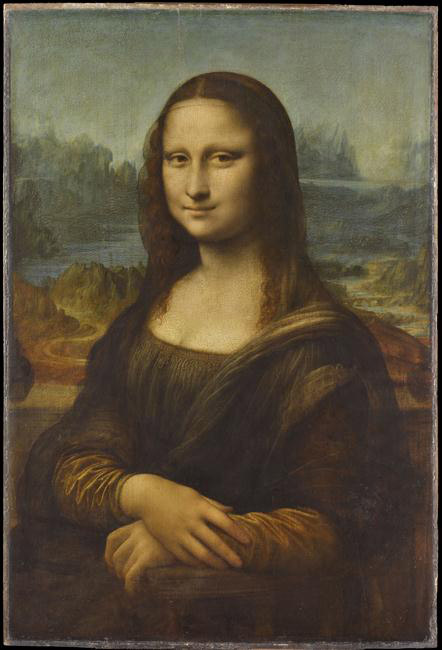The modern world cannot be imagined without the cultural aspect in all its forms and manifestations, as it provides people with the ability to think in paradigms that contravene the conventional patterns of outlook and perception of life. Hence, art, being an extremely extensive concept that encompasses various forms such as literature and cinematography, is a highly individualistic matter, which makes people look at the same thing from completely different perspectives. A prime example of such an artwork is Leonardo da Vinci’s Mona Lisa, one of the most famous paintings in the world. To begin with, it is important to take a look at the physical characteristics of the painting in order to make further conclusions about its content. Hence, Mona Lisa, also known as La Gioconda, looks as follows:

As it may be seen from the painting, the work itself contains a variety of details, which makes it look like the painting cannot be more than five centuries old. Such detalization of the artwork has eventually led to the fact that researchers of many fields made an attempt to decode the information hidden between the painting in order to project the implicit meaning of the artwork. At first glance, the painting itself contains a portrait of a woman, allegedly the wife of the Florentine merchant Francesco di Bartolomeo del Giocondo (Encyclopedia Britannica, 2020). However, the work itself means more than a plain depiction of a woman, as it serves as a symbolic turning point for the epoch of Renaissance and its distinctive artistic features.
In fact, La Gioconda has become a full-scale innovation in terms of the representation of the human body and its proportions. Since the very emergence of the painting, many artists all over the world embraced the idea of utilizing freer techniques of composition and three-quarter pose for portrait (Encyclopedia Britannica, 2020). Thus, it may be concluded that while Mona Lisa does not obtain a variety of hidden, symbolic meanings, it serves as a true asset in terms of the revolution of portrait paintings.
The aforementioned painting is primarily focused on the aspect of its meaningfulness and individual influence on the observer of the artwork. In fact, when speaking of the personal experience related to the work, it would be safe to assume that Mona Lisa, at some point, served as a catalyst in terms of the emergence of my interest in art. That is, having observed the seemingly plain yet extremely sophisticated painting, I made first attempts to define the details hidden in the artwork that made it such a fascinating example of a portrait.
For example, in one of the recent studies, it was estimated that the skin color of the woman was related to the diseases popular among fellow Florence residents in the epoch of Renaissance (Mehra & Campbell, 2018). Hence, it may be concluded that the overall influence of the following artwork is primarily caused by the multiplicity of interpretations that encourage individuals to experience art in every single aspect of their lives.
Conclusion
To conclude, the example of the aforementioned artwork showcases the overall impact that art may have on the person’s career and life. Human development is frequently dependent on one’s ability to perceive reality critically, i.e., identify how the situation or item may be regarded from different sides. Art, hence, plays one of the most significant roles in terms of teaching people the ability to feel the environment through the prism of human senses, providing them with the ability to become individuals rather than just a part of society.
References
Da Vinci, L. (c. 1503-19). Mona Lisa [Oil painting on wood]. The Louvre Museum, Paris, France. Web.
Encyclopedia Britannica. (2020). Mona Lisa, painting by Leonardo da Vinci. Web.
Mehra, M. R., & Campbell, H. R. (2018). The Mona Lisa decrypted: allure of an imperfect reality. In Mayo Clinic Proceedings (Vol. 93, No. 9, pp. 1325-1327). Elsevier.